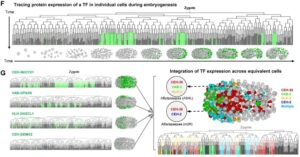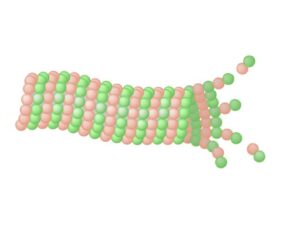Agarose pad method for C. elegans embryos, larvae and adult worms.
Introduction
To get an accurate temperature using our CherryTemp temperature controller and ensure the accurate control we provide, samples must be placed close to the thermalisation chip (<500µm). This protocol is suitable for C. elegans embryo, larva and adult. For larva and adult, skip steps 5-7.
CherryTemp guide: Temperature control spacers sample mounting protocol
Protocol for sample mounting system: agar pad
Step-by-step guidelines:
Step 1: Align 3 microscope slides and stick lab tape on the 2 external ones (lengthwise).

Step 2: Drop melted agarose (50 to 100µl) on the middle one. Diameter of the pad must be around 1cm diameter.
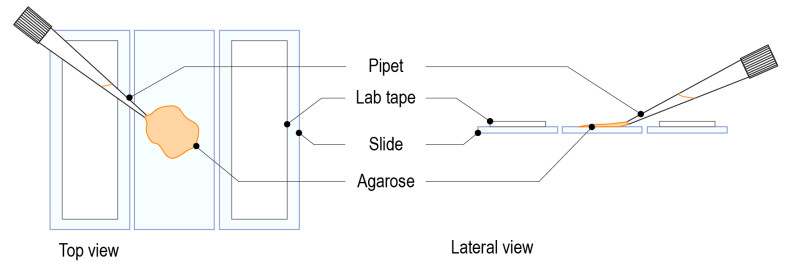
Step 3: Top the agarose with another clean slide, placed perpendicularly. Apply gentle pressure and allow agarose to solidify.
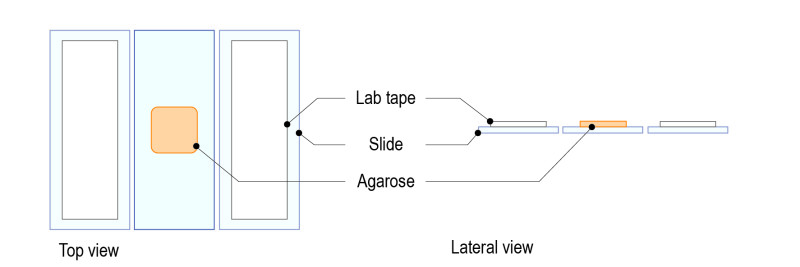
Step 4:
After agarose has solidified, gently remove the top slide. Agarose is ready to use, and the pad will be less than 500µM width.

Step 5:
Pick young adults into pre-cooled M9 medium (16°C).
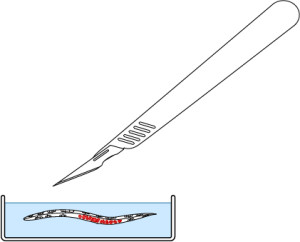
Step 6:
Dissect them by cutting at both end of the uterus using a scalpel and #15 blade to release the embryos

Step 7:
Choose the embryos of the desired stage and transfer them to a cover slip using a mouth pipette.

Step 8:
Top the coverslip with our dedicated spacer. Pile-up several spacers for a particular height.
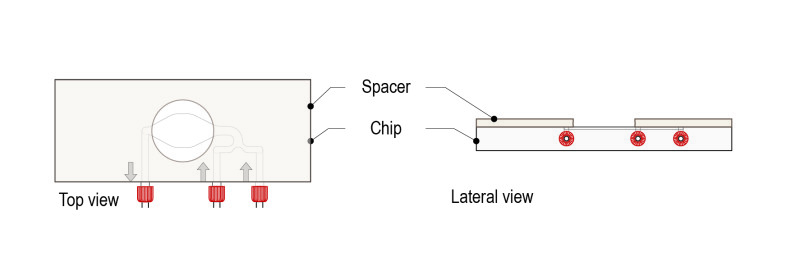
Step 9:
Transfer the pad onto the CherryTemp chip (engravements facing down, cover slip and liquid microfluidic chamber facing up). The pad must be centred on the thermalising pattern.
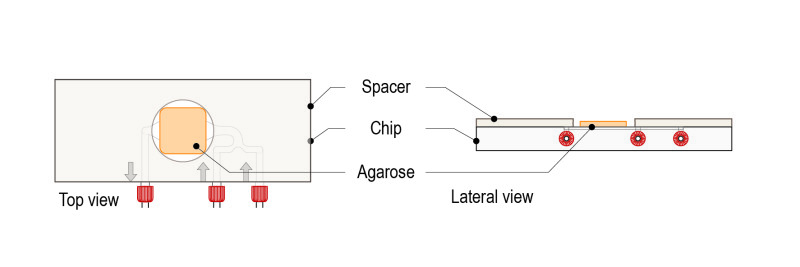
Step 10:
Add the embryos in a 5µl drop of M9 on the agar pad.
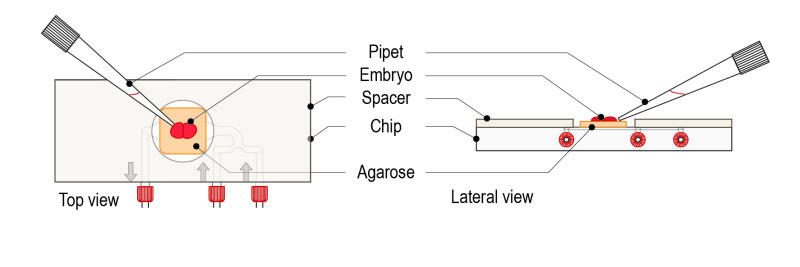
Step 11:
Top the coverslip with our dedicated spacer. Pile-up several spacers for a particular height.
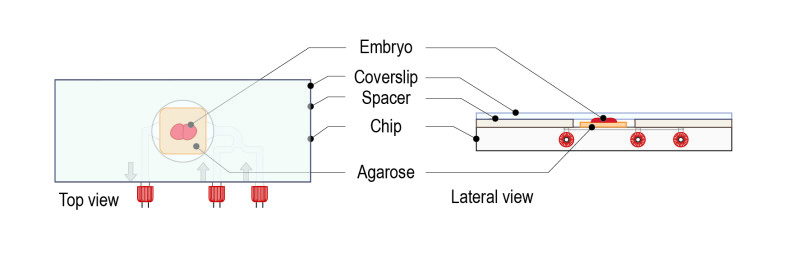
Step 12:
Flip the mounted sample 180° for an inverted microscope configuration.
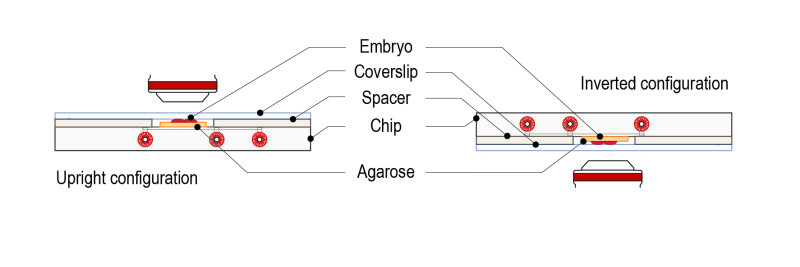
References
- Methods adapted from J. Dumont and J.C. Canman labs (2016) as well as various protocoles available on the Hyman lab and the worm atlas website and from our user’s feedback.
- T. Davies, S. Sundaramoorthy, S.N. Jordan,M. Shirasu-Hiza, J. Dumont and J.C. Canman, 2016, “Using fast-acting temperature-sensitive mutants to study cell division in Caenorhabditis elegans“, Methods in Cell Biology, Volume 137, ISSN 0091-679X, http://dx.doi.org/10.1016/bs.mcb.2016.05.004

